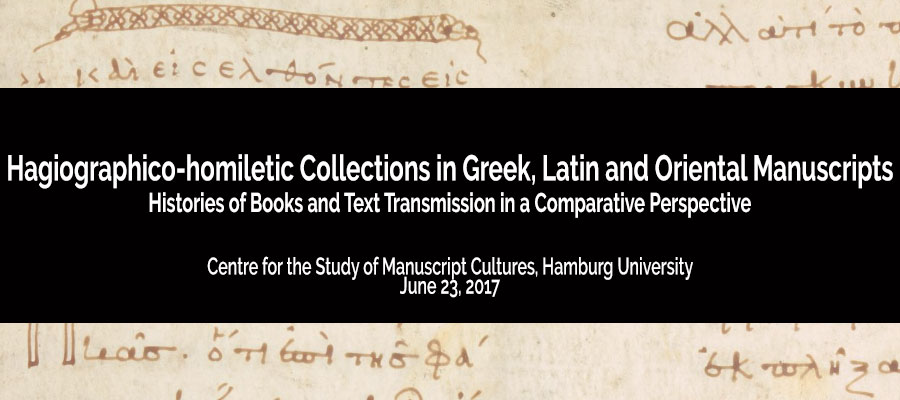Hagiographico-homiletic Collections in Greek, Latin and Oriental Manuscripts – Histories of Books and Text Transmission in a Comparative Perspective, Centre for the Study of Manuscript Cultures, Hamburg University, June 23, 2017
The vast majority of manuscripts in the Christian world, both West and East, consists of Bibles and liturgical books, florilegia, and hagiographic-patristic collections (homiliaries). The same kind of manuscripts exists in different linguistic traditions; sometimes containing the same texts that were translated and circulated. Even within one language, those manuscripts were rarely taken in consideration for themselves; editors of a specific text will generally use them, but extracting the text to be edited from its context. The gigantic work Albert Ehrhard did on Greek manuscripts of what he calls the “hagiographic-homiletic” tradition ("Überlieferung und Bestand der hagiographischen und homiletischen Literatur der griechischen Kirche”, published between 1937 and 1952), trying to classify those manuscripts according to their contents, is unparalleled in other languages. Although probably necessary for the purpose of an edition, the de-contextualisation of texts from the gatherings in which they were transmitted obscures to some extent our understanding of their transmission history, for which a more global approach, combining stemmatological analysis and paleographical-codicological studies, is necessary. The problem is made even more acute in the case of texts translated and transmitted throughout the ancient Christian world: were the collections translated as such or were translated texts rearranged in other collections? Whereas it would probably not make sense to edit each collection for itself, it is important to study them, across the languages, as textual witnesses and as material objects. Yet the task is daunting, requires a comparative approach and a clear methodology, which has not yet been developed. Ehrhard’s work, however admirable, is only a first step, but his efforts were unfortunately never continued (except for an index compiled by Lidia Perria).
The focus of this workshop lies in a comparative perspective, on the origin and development of “hagiographico-homiletic collections”, with a special attention to methodological issues and instrumenta studiorum (electronic or not). Some of the questions to be raised are: Is it possible to identify common clusters of homilies in the different traditions under consideration? If yes, what does it tell us about the history of those collections? Which texts / authors are preserved only through those collections (and in which languages)? Can we compare the history of transmission of homilies preserved both in those collections and in “authorial” collections? What can we learn about the circulation of early Christian homiletics, based on the examination of hagiographico-homiletic collections? How could we go beyond the state of the art which is constituted by Ehrhard’s monumental work? For example, what could a comparative codicological study of the most ancient manuscripts tell us about the use of those collections? Etc.
